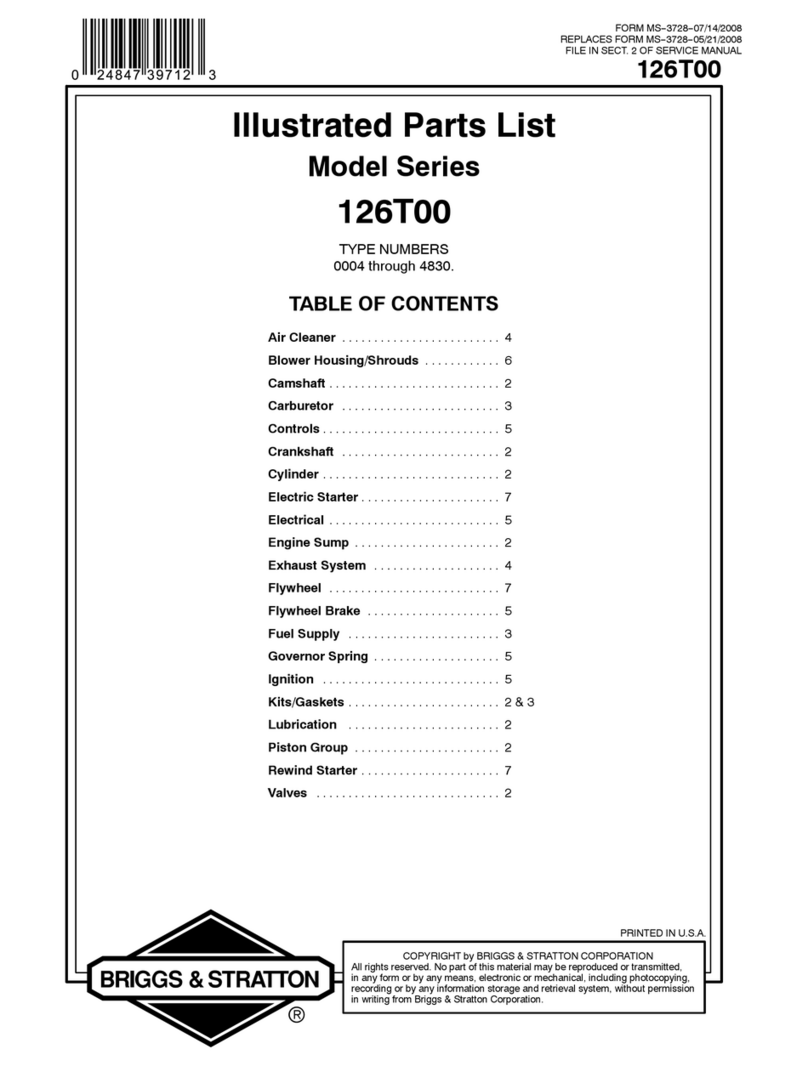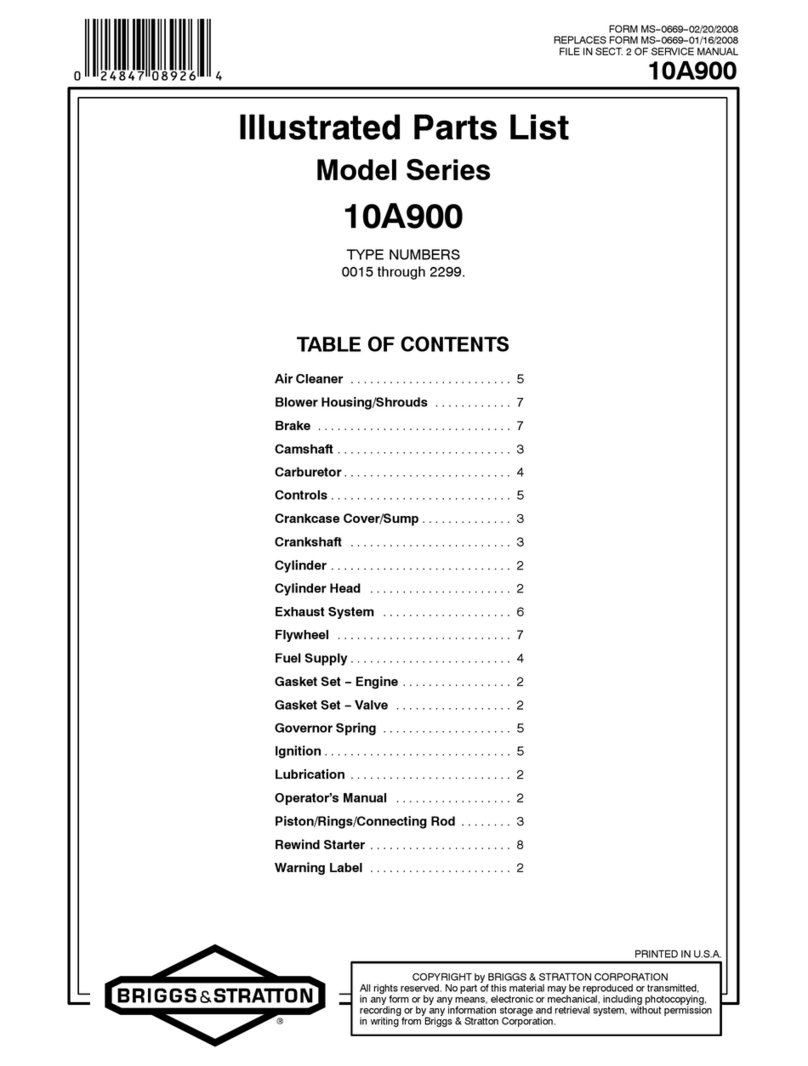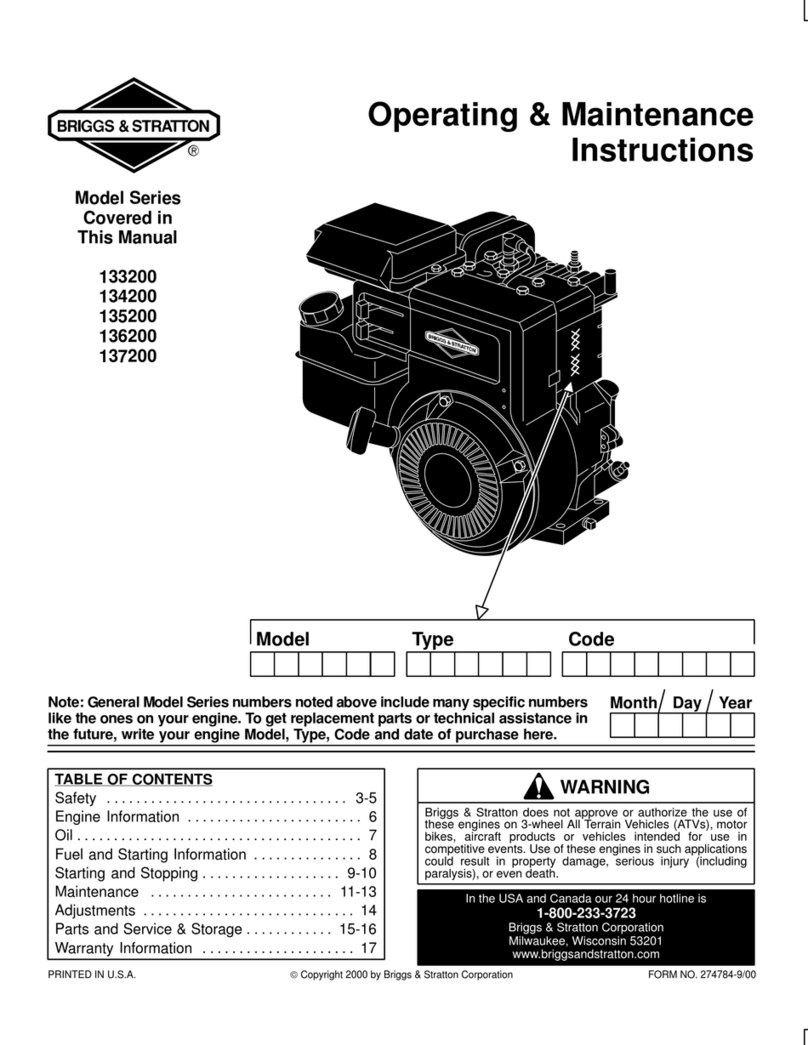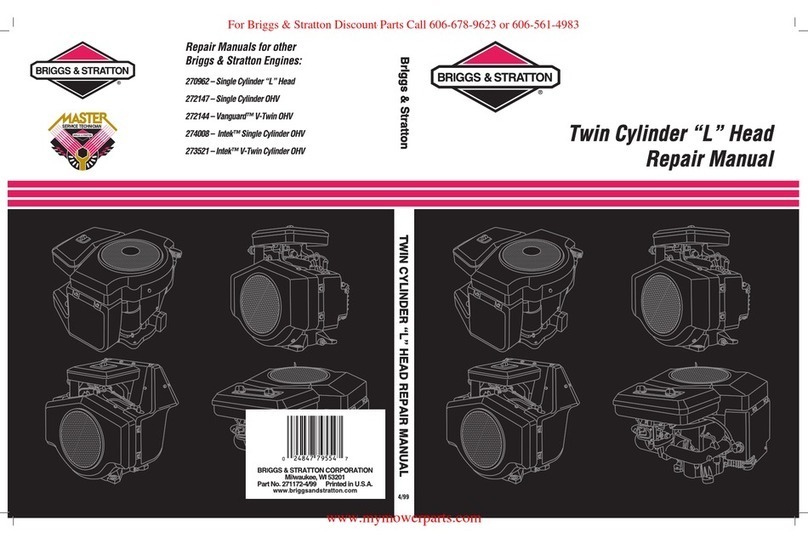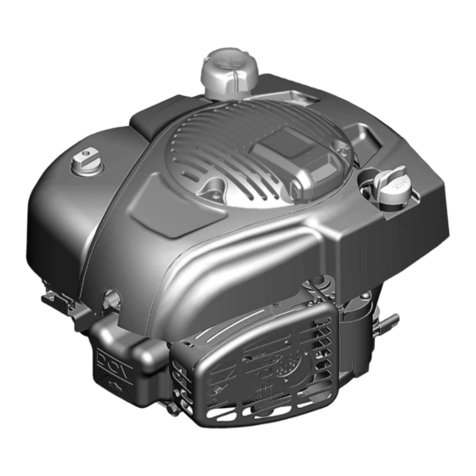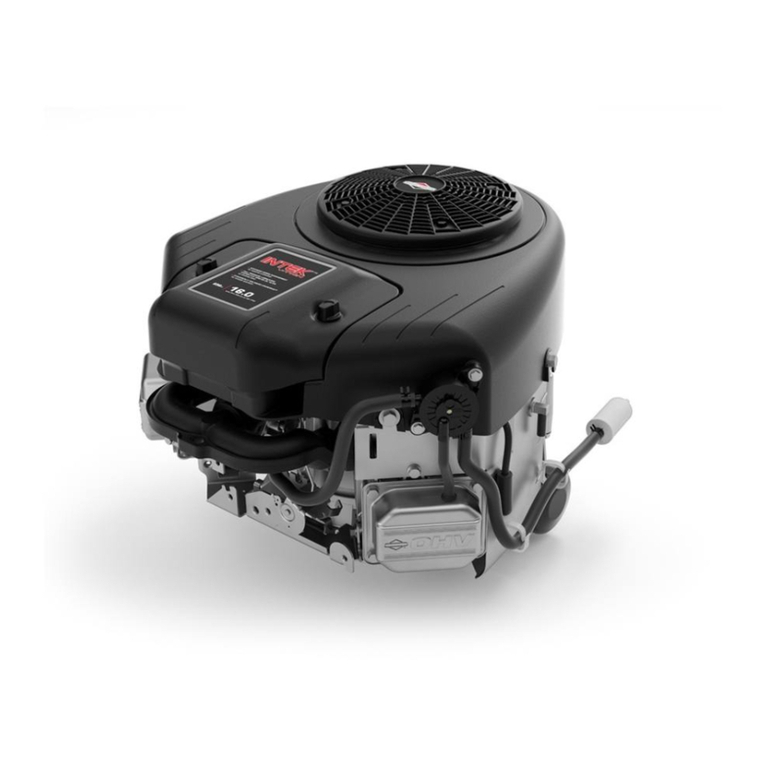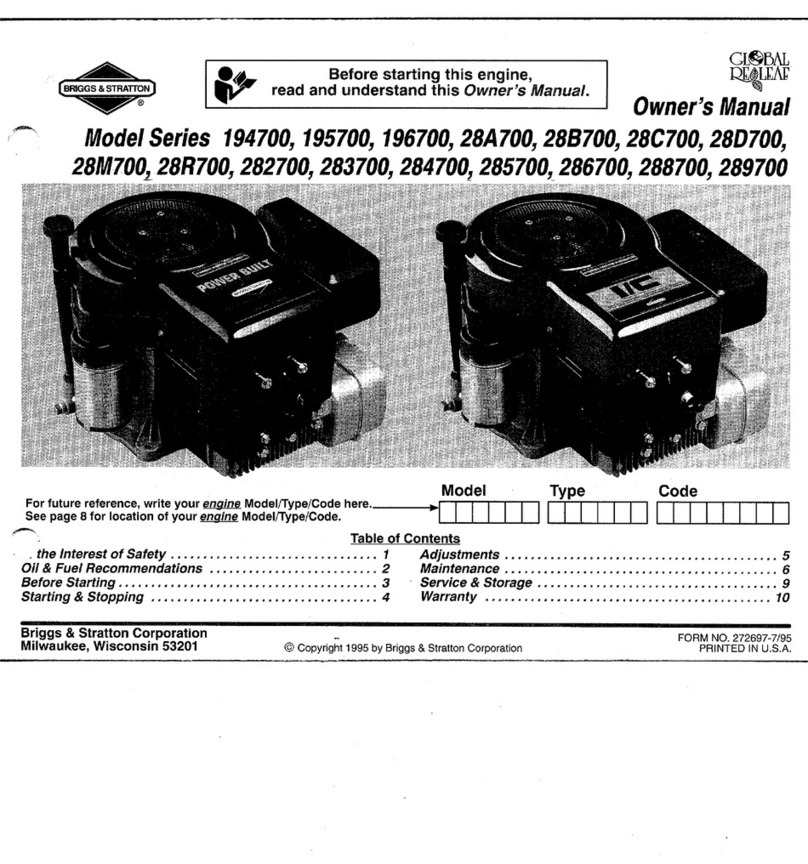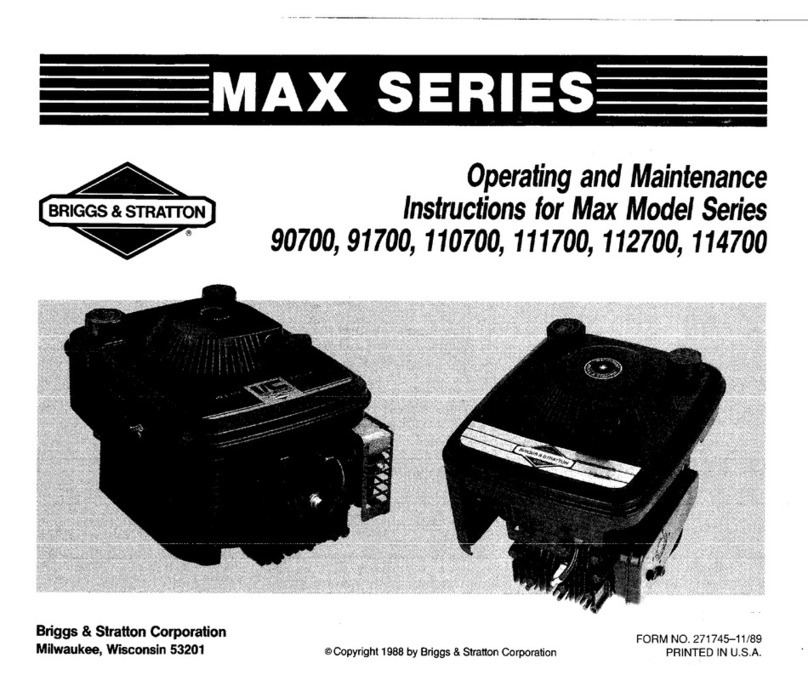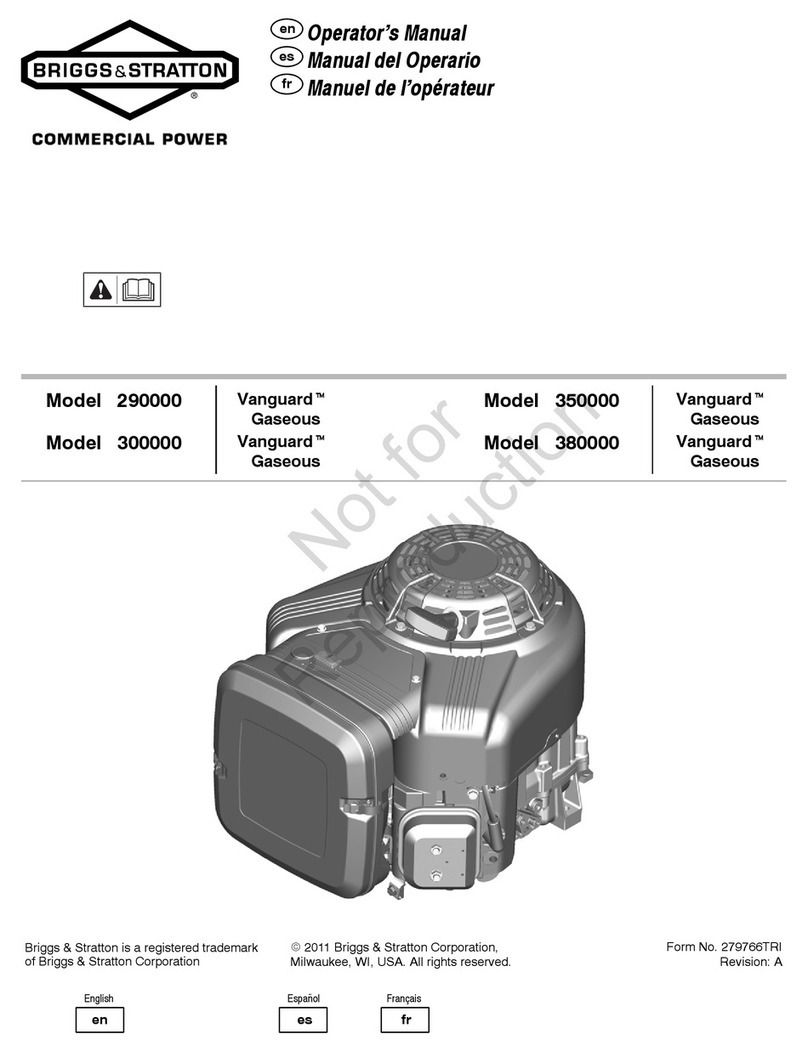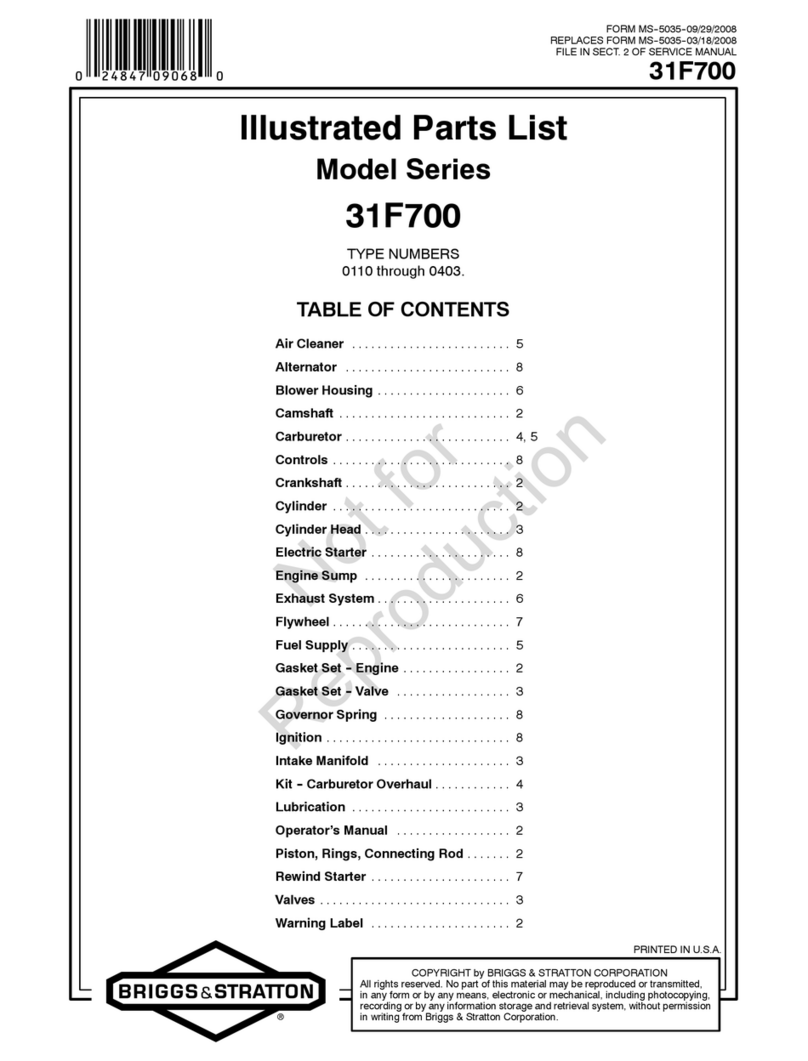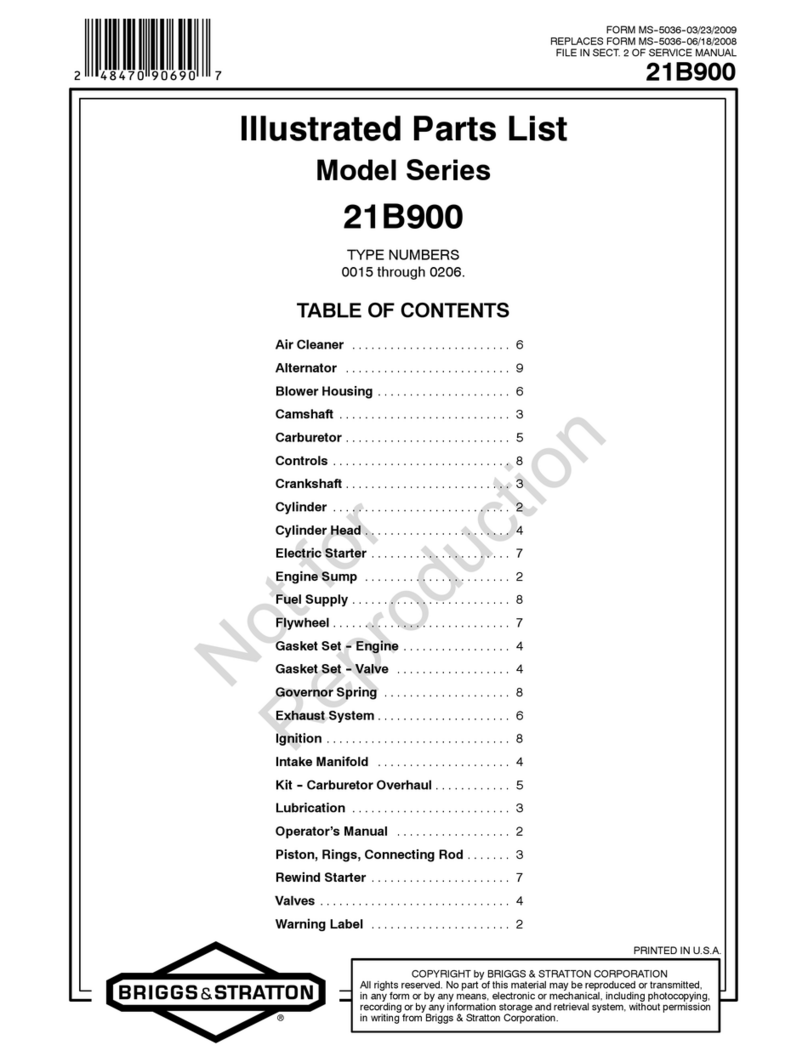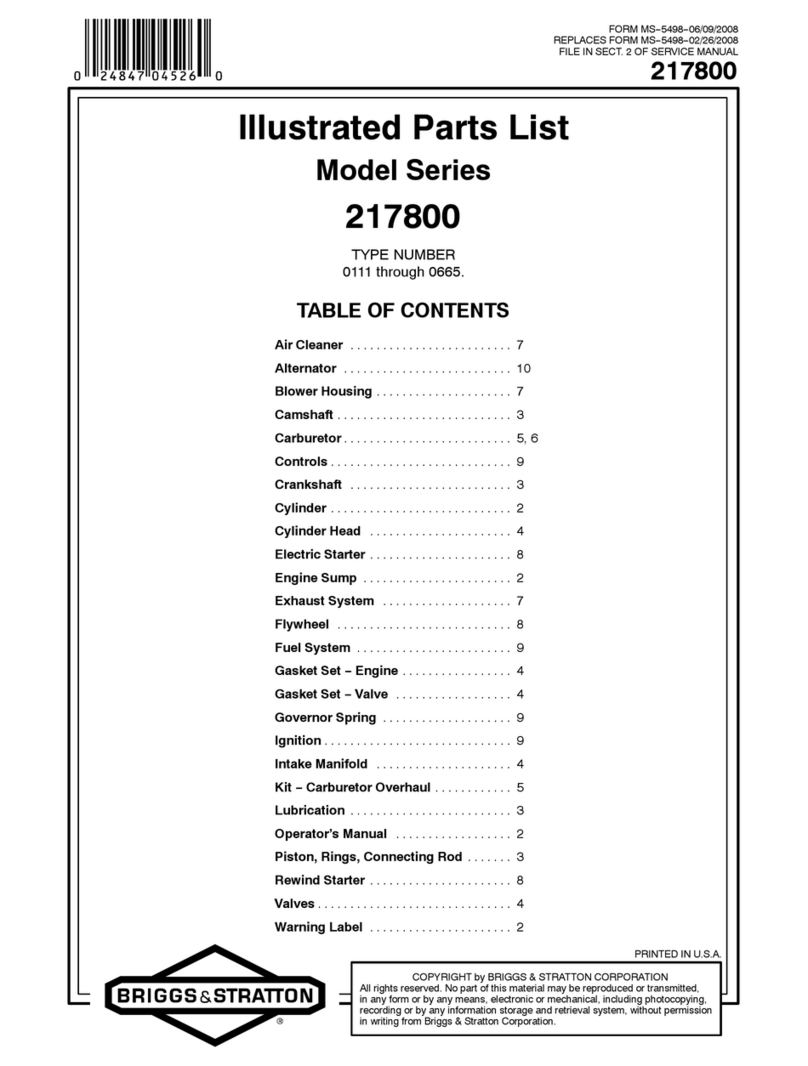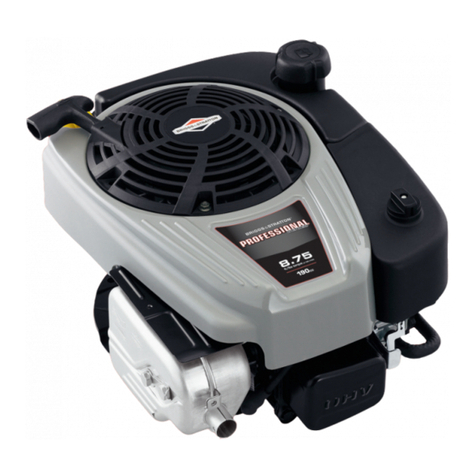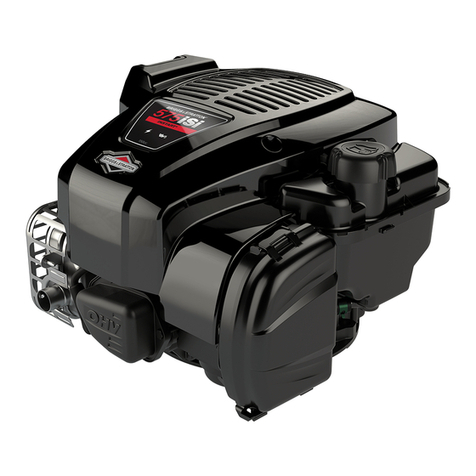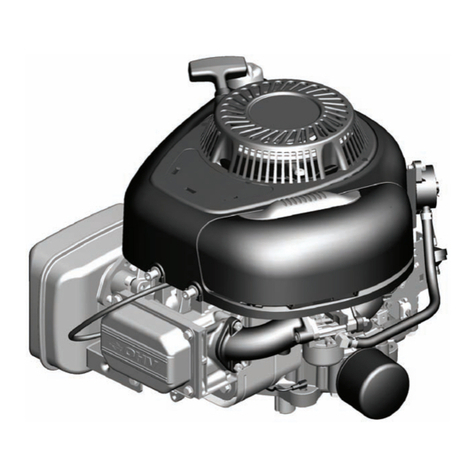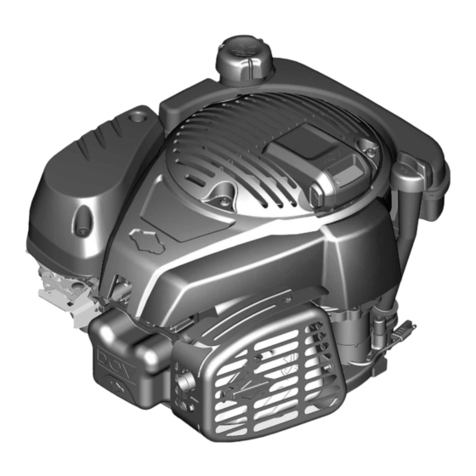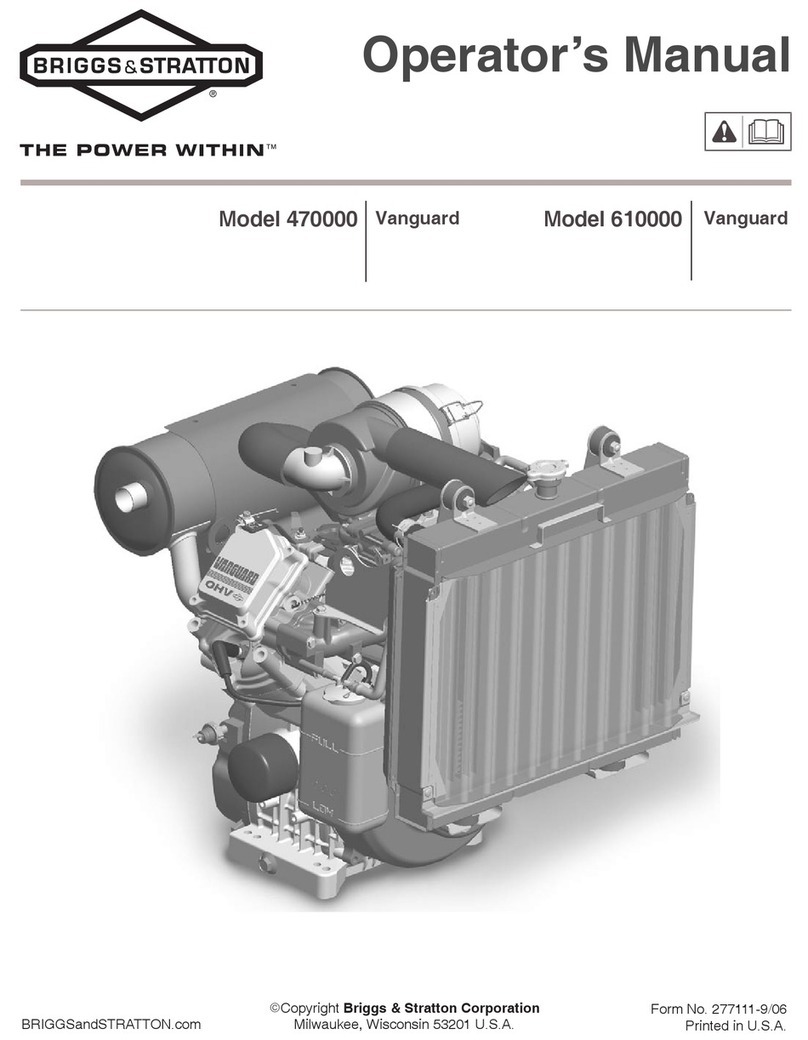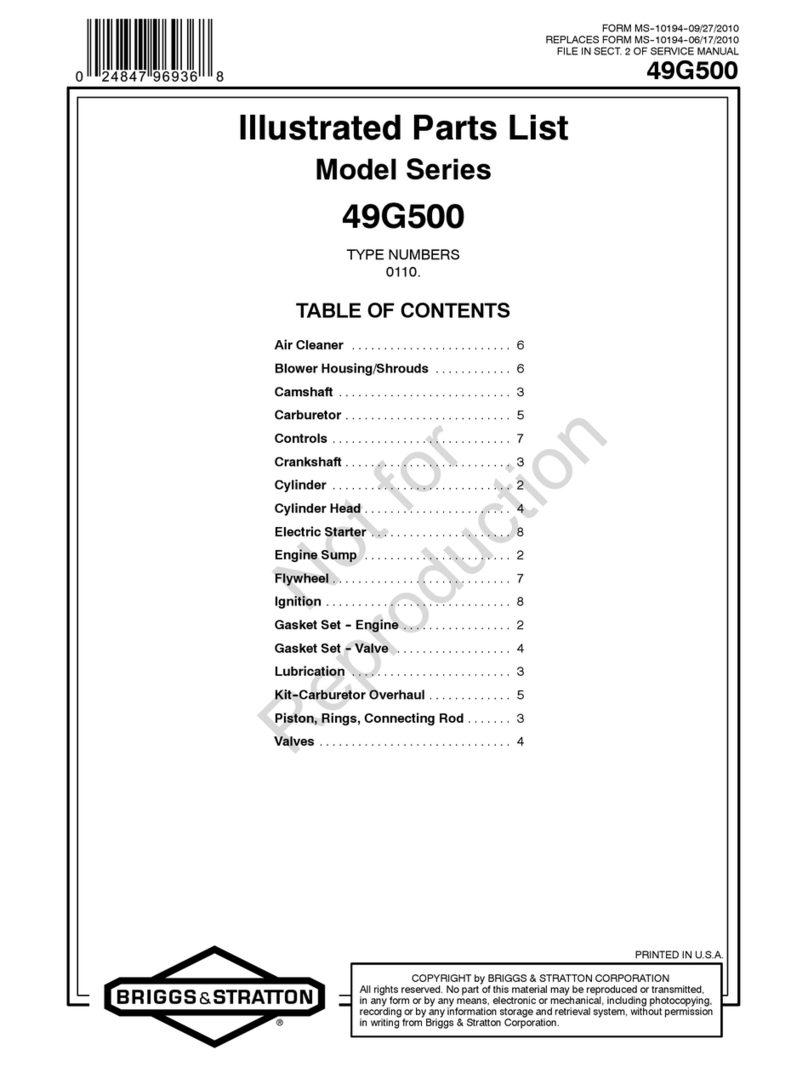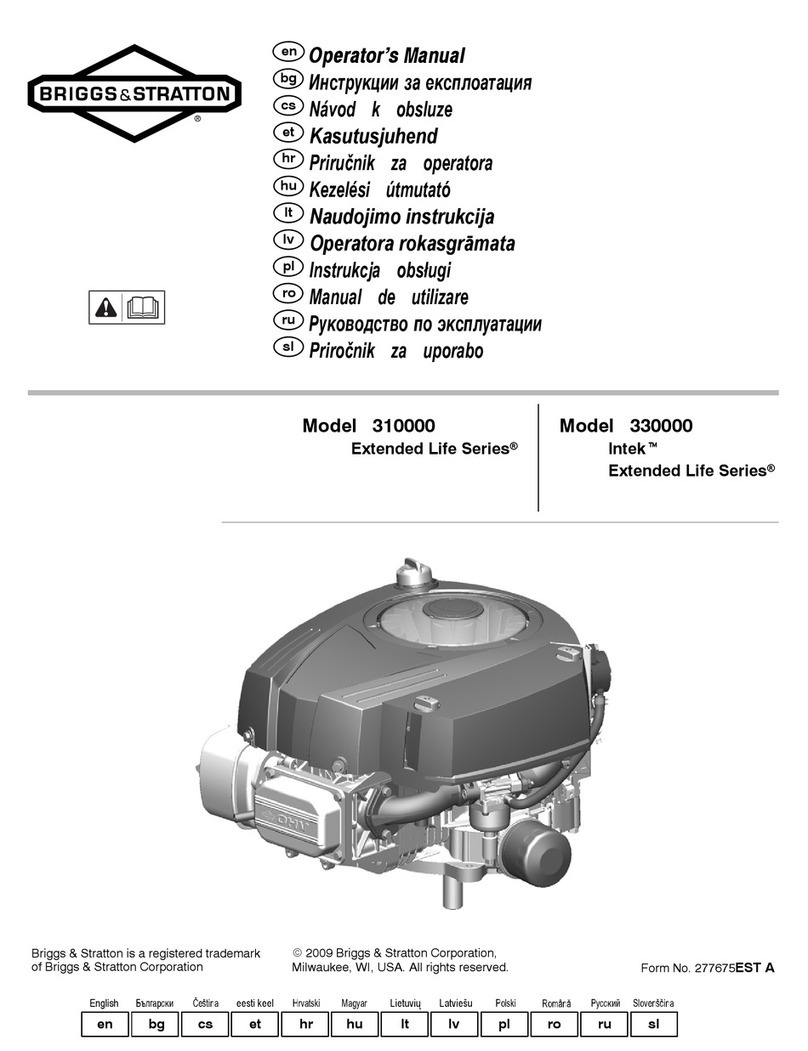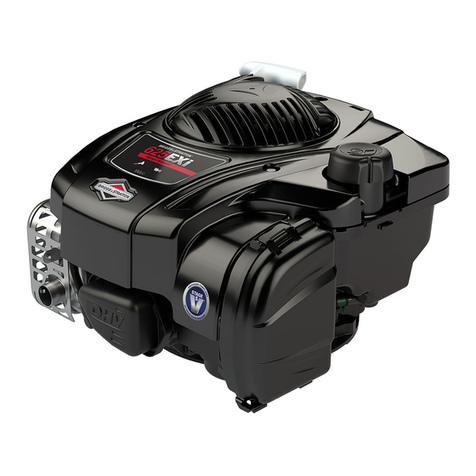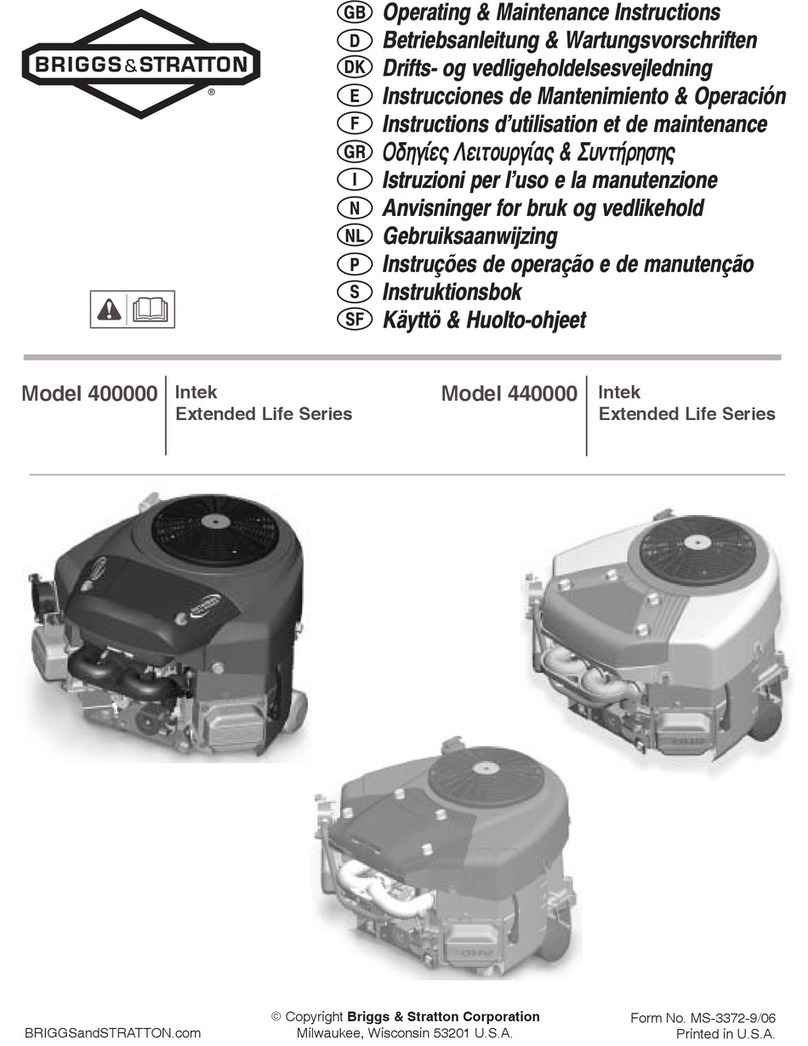
manufacturer, retailer, or dealer to obtain a spark arrester designed for the exhaust
system installed on this engine.
Remove debris from the muffler and cylinder area. Inspect the muffler for cracks,
corrosion, or other damage. Remove the deflector or the spark arrester, if equipped, and
inspect for damage or carbon blockage. If damage is found, install the replacement parts
before you operate the equipment.
WARNING
Replacement parts must be of the same design and installed in the same position as the
original parts. Other parts could result in damage or an injury.
Change Engine Oil
WARNING
Fuel and its vapors are flammable and explosive. Fire or explosion could result in
burns or death.
During operation, the engine and muffler become hot. If you touch a hot engine,
thermal burns can occur.
• If you drain the oil from the top oil fill tube, the fuel tank must be empty. If it is not
empty, fuel leakage can occur and cause a fire or an explosion.
• Before you touch the engine or muffler, stop the engine and wait two (2)
minutes. Make sure that the engine and muffler are safe to touch.
Used oil is a hazardous waste product and must be discarded of correctly. Do not
discard with household waste. Contact your local authorities, service center, or dealer
for safe disposal or recycling facilities.
Remove Oil
1. With the engine OFF but warm, remove the key from the key switch (if equipped).
2. Remove the oil drain plug (A, Figure 6). Drain the oil into an approved container.
3. Install and tighten the oil drain plug (A, Figure 6).
4. On models equipped with an oil filter, remove the oil filter fastener (B, Figure 7).
Then, remove the the oil filter (C).
5. Clean the oil filter (C, Figure 7) in kerosene or diesel fuel to remove dirt. If the oil
filter is damaged, replace it.
6. Install the oil filter (C, Figure7) and tighten the oil filter fastener(B).
Add Oil
• Make sure the engine is level.
• Clean the oil fill area of all debris.
• Refer to the Specifications section for oil capacity.
1. Remove the dipstick (A, Figure 8). Remove oil from the dipstick with a clean cloth.
2. Slowly add oil into the engine oil fill (C, Figure 8). Do not overfill. Wait one minute
and then check the oil level.
3. Install and tighten the dipstick (A, Figure 8).
4. Remove the dipstick and check the oil level. The correct oil level is at the top of the
full indicator (B, Figure 8) on the dipstick.
5. Install and tighten the dipstick (A, Figure 8).
Change Oil in Reduction Unit
WARNING
Fuel and its vapors are flammable and explosive. Fire or explosion could result in
burns or death.
During operation, the engine and muffler become hot. If you touch a hot engine,
thermal burns can occur.
• If you drain the oil from the top oil fill tube, the fuel tank must be empty. If it is not
empty, fuel leakage can occur and cause a fire or an explosion.
• Before you touch the engine or muffler, stop the engine and wait two (2)
minutes. Make sure that the engine and muffler are safe to touch.
Used oil is a hazardous waste product and must be discarded correctly. Do not
discardwithhousehold waste. Check with your local authorities, service center, or
dealer for safe disposal/recycling facilities.
1. Remove the oil fill plug (A, Figure 9).
2. With the engine OFF but warm, remove the oil drain plug (B, Figure 10). Drain the
oil into an approved container.
NOTE:All oil drain plugs can be installed in the engine.
3. Install and tighten the oil drain plug(B, Figure 10).
4. Make sure the engine is level. Clean the oil fill area (C, Figure 9)and remove all
debris.
5. Slowly add gear lube into the oil fill (C, Figure 9) until the oil comes out of the oil
drain hole (D, Figure 10).See the Specifications section for oil capacity.
6. Install and tighten the oil fill plug (A, Figure 9).
Servicing the Air Filter
WARNING
Fuel vapors are flammable and explosive. Fire or explosion could result in burns
or death.
• Do notstart and operate the engine with the air cleaner assembly (if equipped)
or the air filter (if equipped) removed.
NOTICE
Do not use pressurized air or solvents to clean the filter. Pressurized air could result in
damage to the filter and solvents will dissolve the filter.
See the Maintenance Schedule for service requirements.
Different models will use a foam or a paper filter. Some models could also have an
optional pre-cleaner that can be washed and used again. Compare the illustrations in
this manual with the type installed on your engine and service as follows.
Paper Air Filter
1. Loosen or remove the fastener(s), if installed, (A, Figure 11).
2. Open or remove the cover (B, Figure 11).
3. To prevent debris that falls into the carburetor, carefully remove the pre-cleaner (D,
Figure 11) and the filter (C) from the air filter base.
4. Remove the pre-cleaner (D, Figure 11), if installed, from the filter (C).
5. To loosen debris, lightly tap the filter (C, Figure 11) on a hard surface. If the filter is
very dirty, replace with a new filter.
6. Clean the pre-cleaner (D, Figure 11), if installed, in liquid detergent and water. Let
the pre-cleaner fully air dry. Do not add oil to the pre-cleaner.
7. Assemble the dry pre-cleaner (D, Figure 11), if installed, to the filter (C).
8. Install the filter (C, Figure 11) and the pre-cleaner (D) onto the air filter base. Make
sure that the filter fits tightly on the air filter base.
9. Close or install the cover (B, Figure 11) and secure with the fastener(s) (A). Make
sure that the fastener(s) is tight.
Oil Bath Air Filter
1. Loosen the hook and remove the oil filter sump (A, Figure 12).
2. Remove the lower and upper filter retainer, (D and G, Figure 12 ), the o-ring (F),
and the filter elements (C and E).
3. Clean the filter elements (C and E, Figure 12) in kerosene or with fuel to remove
dirt. If the filter is dirty, replace it with a new filter.
4. Let the filter fully dry.
5. Add 80 - 120 ml of oil into the oil filter sump (A, Figure 12).
6. Check the oil level. The oil level must be between the hole inside the oil cup (B,
Figure 12).
7. Install the lower and upper filter retainer (D and G, Figure 12), the o-ring (F), the
filter elements (C and E), and the oil filter sump (A).
Servicing the Cooling System
WARNING
During operation, the engine and muffler become hot. If you touch a hot engine,
thermal burns can occur.
Combustible debris, such as leaves, grass, and brush can catch fire.
• Before you touch the engine or muffler, stop the engine and wait two (2)
minutes. Make sure that the engine and muffler are safe to touch.
• Remove debris from the muffler and engine.
NOTICE
Do not use water to clean the engine. Water could cause contamination of the fuel
system. Use a brush or dry cloth to clean the engine.
This is an air cooled engine. Dirt or debris can stop the air flow and cause the engine to
become too hot and result in unsatisfactory performance and decreased engine life.
1. Use a brush or dry cloth to remove debris from the recoil starter (A, Figure 13).
2. Keep linkage, springs, and controls (B, Figure 13) clean.
3. Keep the area around and behind the muffler (C, Figure 13) free of combustible
debris.
8 BRIGGSandSTRATTON.COM
